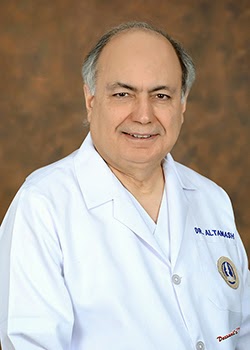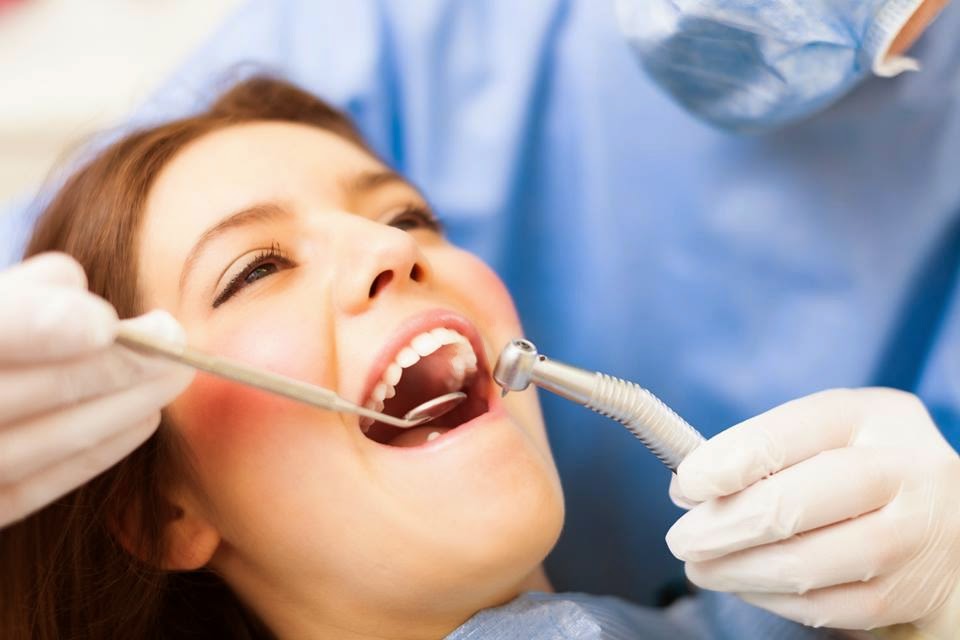Gum disease and treatment
Gum disease is an unpleasant experience; for you and the people around you. It causesdiscomfort and pain to the person experiencing it and bad breath that is discomforting for
the people the sufferer is interacting with.The main cause of gum disease is poor oral hygiene.
Altamash Dental Clinic is proud to state that we have a leading dental clinic in Pakistan
offering advanced gum treatment. Please call or visit our clinic in Karachi.
Gingivitis and Periodontitis
Gingivitis is the swelling of the gum. It varies in level of severity. The vital signs of gingivitisare red swollen gums that bleed easily while brushing. It begins when food deposits mix up
with saliva and bacteria. The mixture forms dental plaque and sticks to the teeth. With time,
dental plaque turns into tartar or calculus, which is hard to remove without professional
help.
Periodontitis is when gingivitis advances and the bone below the gum gets affected.
Periodontitis derives from the word periodontal, which means around the tooth; and refers to the
structures that surround and support teeth such as gum and bone.
When the bone below the gum is infected, the gums start to recede away from the teeth
and forms deep gum pockets. This is called attachment loss. These pockets readily collect
plaque and bacteria. Since these pockets are very difficult to keep clean, bone loss becomes
inevitable. As periodontal disease progresses into later stages (early, moderate, and
advanced) and more bone tissue is lost, the gum pockets get deeper and the teeth may
eventually become loose and fall out.
There are several treatments for gum diseases ranging between non-surgical and surgical
A. Professional cleaning:
This procedure involves the cleaning of plaque from the teeth. Plaque is hard and tough to remove; hence requires professional help. Professional dental cleaning is not a cure for gum disease, rather, it is a precautionary measure. If your doctor sees any early signs of the disease, he may suggest a medicated
toothpaste or mouthwash to treat and stall the progression.
B. Scaling and root planing:
and forms deep gum pockets. This is called attachment loss. These pockets readily collect
plaque and bacteria. Since these pockets are very difficult to keep clean, bone loss becomes
inevitable. As periodontal disease progresses into later stages (early, moderate, and
advanced) and more bone tissue is lost, the gum pockets get deeper and the teeth may
eventually become loose and fall out.
Treatment for gum disease:
There are several treatments for gum diseases ranging between non-surgical and surgical
methods. The treatment depends upon the severity of the disease.

Non-surgical treatments:
A. Professional cleaning:
This procedure involves the cleaning of plaque from the teeth. Plaque is hard and tough to remove; hence requires professional help. Professional dental cleaning is not a cure for gum disease, rather, it is a precautionary measure. If your doctor sees any early signs of the disease, he may suggest a medicated
toothpaste or mouthwash to treat and stall the progression.
B. Scaling and root planing:
This is a deep-cleaning, nonsurgical procedure. This procedure is done under a local anesthetic, whereby plaque and tartar from above and below the gum line are scraped away (scaling) and rough spots on the tooth root are made smooth (planing). Smoothing the rough spots removes bacteria and
provides a clean surface for the gums to reattach to the teeth. This procedure is recommended if your dentist identifies tartar and calculus at and around your teeth.
Surgical treatments:
A. Flap surgery:
provides a clean surface for the gums to reattach to the teeth. This procedure is recommended if your dentist identifies tartar and calculus at and around your teeth.
Surgical treatments:
A. Flap surgery:
In this procedure, the gums are lifted back to remove tartar. If required, the irregularities of the bones are smoothened to stop bacteria from spreading. The gum is then placed back which fits snugly around the tooth. This method helps in reducing the space between the gum and the tooth caused by
tartar. Less space means lesser grounds for bacterial growth.
B. Bone grafts:
tartar. Less space means lesser grounds for bacterial growth.
B. Bone grafts:
In this procedure fragments of your bone, synthetic bone, or donated bone are used for regeneration of the damaged bone. This gives stability to the teeth. Moreover, tissue engineering helps a lot in the speedy regeneration of damaged or lost tissue or bone.
C. Soft tissue graft:
C. Soft tissue graft:
In this procedure, your tissues are planted at spots where the gums have gone thin or receded. Usually, tissues from the roof of the mouth are grafted to fill in the gaps of the gums.
D. Guided tissue regeneration:
D. Guided tissue regeneration:
This procedure is performed when the bone supporting your teeth has been destroyed. This procedure stimulates bone and gum tissue growth. During the fap surgery, a small piece of mesh-like fabric is inserted between the bone and gum tissue. It works like a partition and keeps the gum tissue from
growing into the area where the bone should be, allowing the bone and connective
tissue to regrow and better support the teeth.
E. Bone surgery:
growing into the area where the bone should be, allowing the bone and connective
tissue to regrow and better support the teeth.
E. Bone surgery:
Smoothes shallow craters in the bone due to moderate and
advanced bone loss. Following flap surgery, the bone around the tooth is reshaped to decrease the craters. This makes it harder for bacteria to grow.
advanced bone loss. Following flap surgery, the bone around the tooth is reshaped to decrease the craters. This makes it harder for bacteria to grow.













